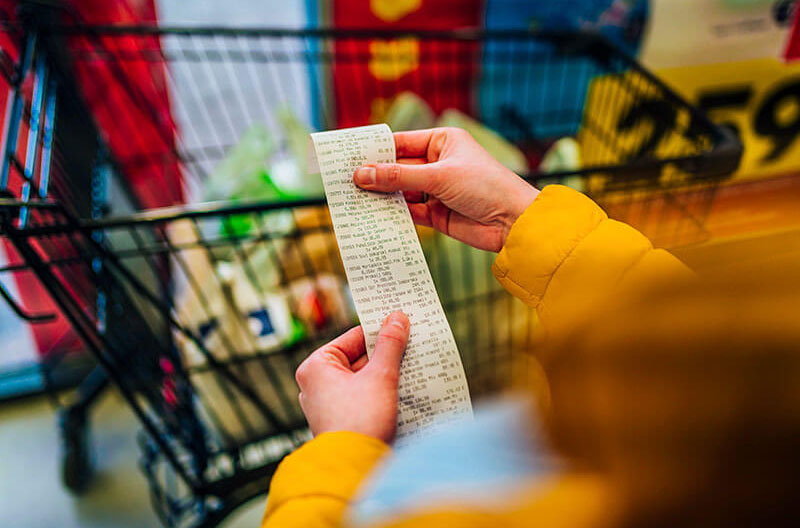by Caitlin Orosz
In today’s grocery market, every penny counts, especially when you’re operating with a lean team. Even if you have fewer stores or fewer SKUs than some competitors, it’s a struggle to relabel shelves with pricing updates. You can maintain a competitive edge and sell more units. You can drive profitable growth with the power of pricing analytics.
Success in grocery retail is fueled by accurate data and supported by pricing analytics. Grocers of all sizes can transform data into actionable insights that drive growth – this isn’t a formula reserved only for big-box stores.
For independent and regional grocers, achieving fair pricing, market alignment and margin protection rests on data quality and automation.
First, secure a foundation with competitive intelligence and product matching. These elements are the fuel for your pricing analytics and strategy, ensuring you have a comprehensive view of the competitive landscape to make informed decisions.
Prioritize reliable and uninterrupted market data. The best competitive intelligence platform provides you with a complete view of the competitive landscape. Armed with this information, you can identify price leaders, evaluate competitor price changes and ensure you’re priced in line with your strategy across your entire catalog.
Behind the scenes, product matching is a crucial process that ensures you’re comparing apples to apples (often literally).
Current product matching approaches all have limitations. Manually matching products by visiting competitive websites is time consuming and error prone. Relying solely on UPCs misses a significant portion of products, especially when it comes to private labels or perishables. Blindly accepting third-party matches can lead to inaccurate data and skew insights. These limitations hinder retailers from gaining a complete picture of the competitive landscape.
Accurate product matching considers factors like brand, size, unit count and even organic vs. conventional options. Without validated product matching, your pricing analysis could be skewed, leading to misleading conclusions and potentially costly decisions.
The powerful combination of competitive intelligence and product matching creates a basis for pricing analytics.
A modern pricing approach
Historically, grocery pricing strategies are driven by:
- What we’ve done before;
- Top items;
- Past competitor activity (two to three weeks old); and
- How low can we go without sacrificing margins and profitability.
This static approach puts grocers behind competitors that are more strategic and flexible in their pricing. Today’s independent grocers have access to the data and tools to connect their data, analysis, strategy and execution in ways that are responsive to consumers, competitors and their short and long-term goals across categories.
Are you ready to ditch the static approach to pricing? Here’s what to expect with a data-driven approach:
- Uncover insights: Use your catalog and sales data and competitive intelligence to reveal your competitive position, top products and sales trends.
- Analyze with ease: Filter pricing data by category, subcategory, competitor, priority or brand to pinpoint specific areas for improvement.
- Focus on the big picture: Automate data collection, product matching and pricing rules so you can strategize on growth initiatives.
- Gain visibility: Stay ahead of the competition. Understand where your prices stand in the market and what price changes you can make to improve profitability.
- Be agile: Utilize location-specific data and document your pricing strategy to create a stronger price perception.
Pricing analytics gives you a holistic view of the market. For regional and independents, the biggest advantage is the ability to zero in on data in your price zones. Get the data that you need and see it clearly visualized. Make confident decisions about what prices to adjust or when to match competitive offers on key products.
Pricing analytics in action
When it comes to pricing, most grocery retailers walk a tightrope. How can you stay competitive, attract customers and maintain healthy margins? Traditionally, grocers have relied on gut instinct and historical data, which come with a limited ability to react to market changes. Pricing analytics shows you your data and enables you to act on it.
Pricing analytics will show you where you’re priced higher or lower than your biggest competitor. With that information, you can tailor your pricing strategies accordingly. For example, you see that your cage-free grade AA large eggs are priced 6 percent lower than that big national store down the street. While your strategy isn’t to match the price, you know you can lower your price by 1-2 percent to be more competitive and not lose margin.
Running an independent grocery store requires laser focus. Managing pricing with spreadsheets, incomplete data or disconnected systems is a recipe for wasted time and lost profits. Bungee Tech’s Retailscape is an all-in-one pricing solution that streamlines your entire pricing process – from data analysis and strategic optimization to automated execution (including ESL integration).
Retailscape empowers you to make smarter decisions faster. Gain a crystal-clear understanding of your competitive landscape, identify pricing risks and opportunities, and unlock actionable insights that will help you sell more units and maximize margins – even with a smaller team.
Here’s how Bungee Tech’s customers leverage pricing analytics:
- A West Coast regional supermarket chain uses Bungee Tech pricing analytics for pricing confidence and a competitive edge. By adopting pricing analytics, the company can easily monitor competitors’ prices and adjust their own as needed. They’re improving margins and winning with loyalty.
- This small grocery retailer in the southeastern U.S. implemented pricing analytics to keep their prices in check against larger chains. The pricing visualizations help the team make informed decisions that align with their business strategy and enable them to offer competitive prices.
Even with fewer stores, you can attain effective pricing technology. Make data-driven decisions and level the playing field with larger chains.
We are passionate about collecting competitive data, matching equal and equivalent products, and giving you the pricing analytics tools you need to stay informed, competitive and continue to be the heart of your community.
Learn more at https://bungeetech.com/
Caitlin Orosz is the director of marketing for Redmond, Washington-based software company Bungee Tech.

